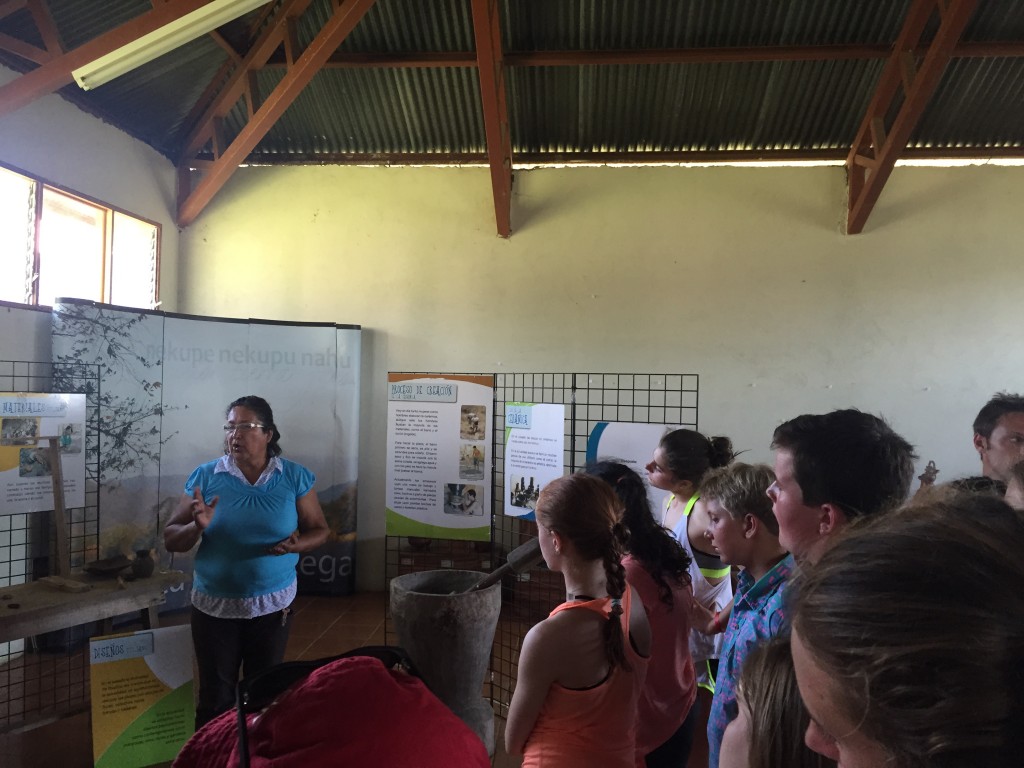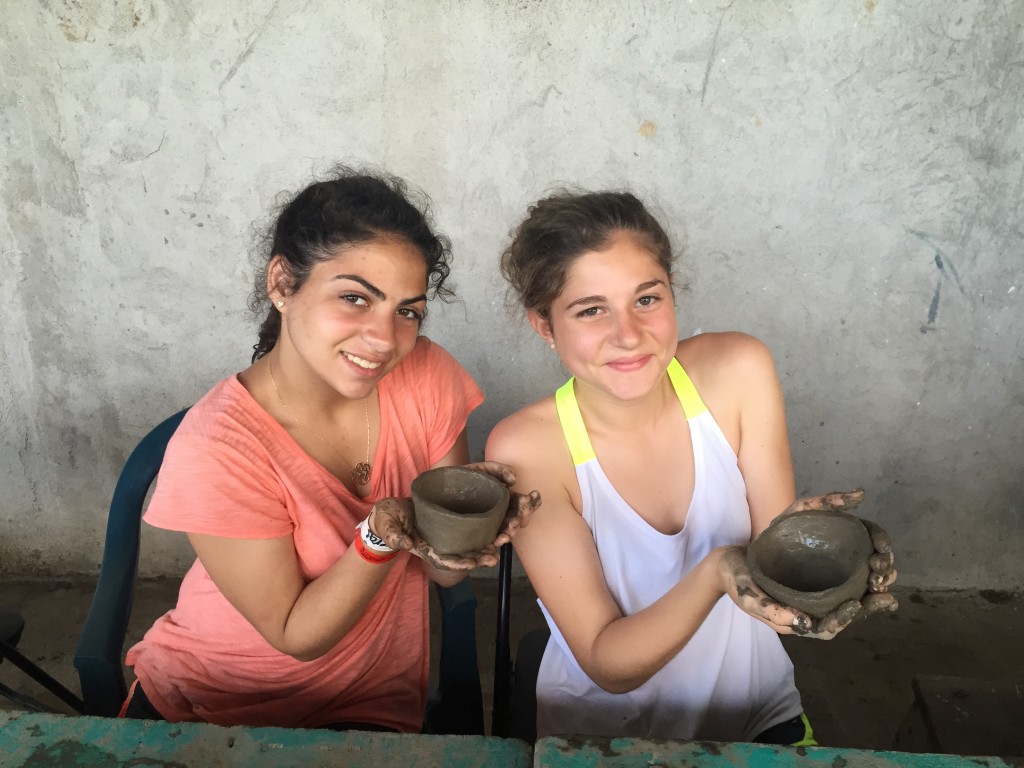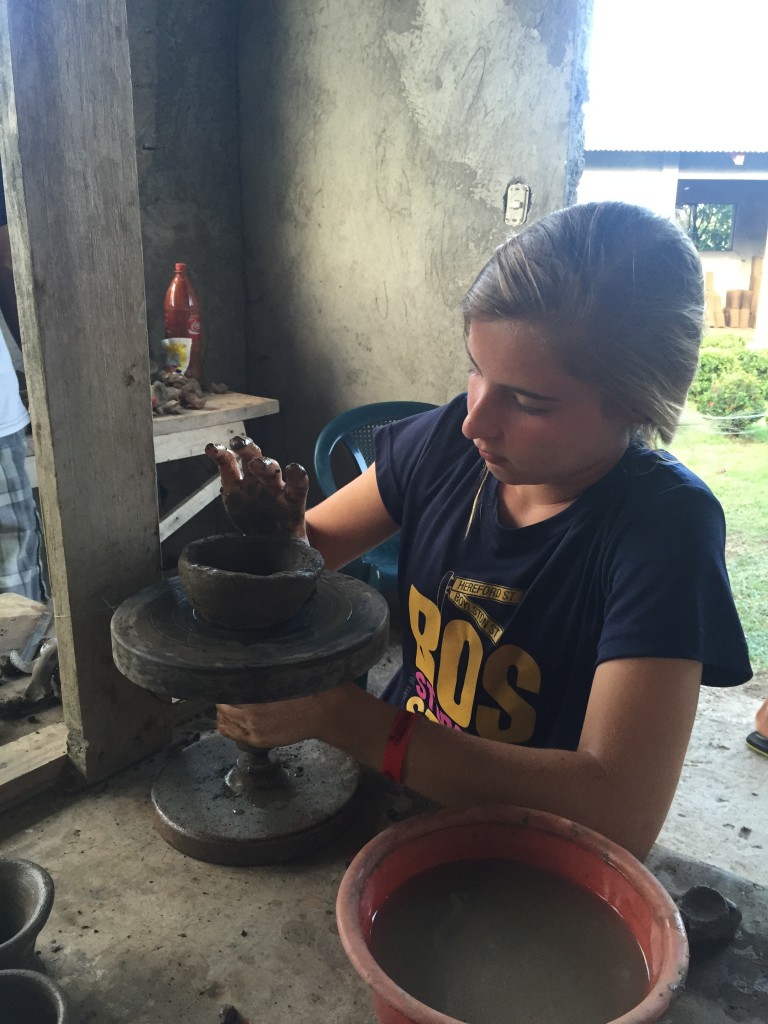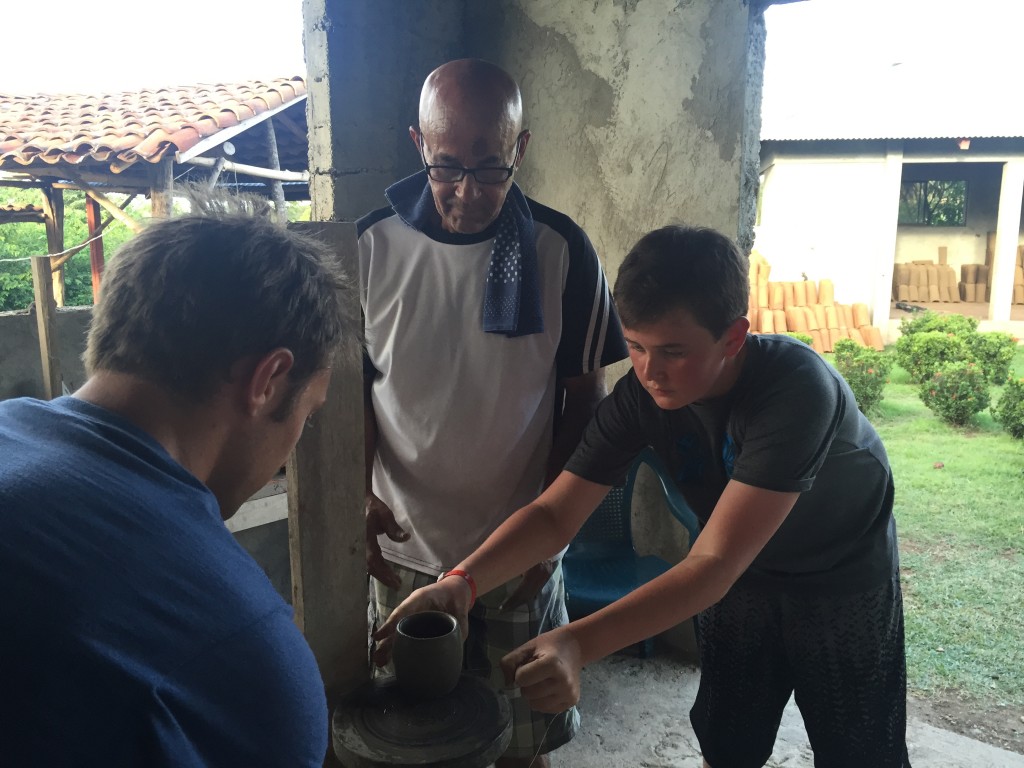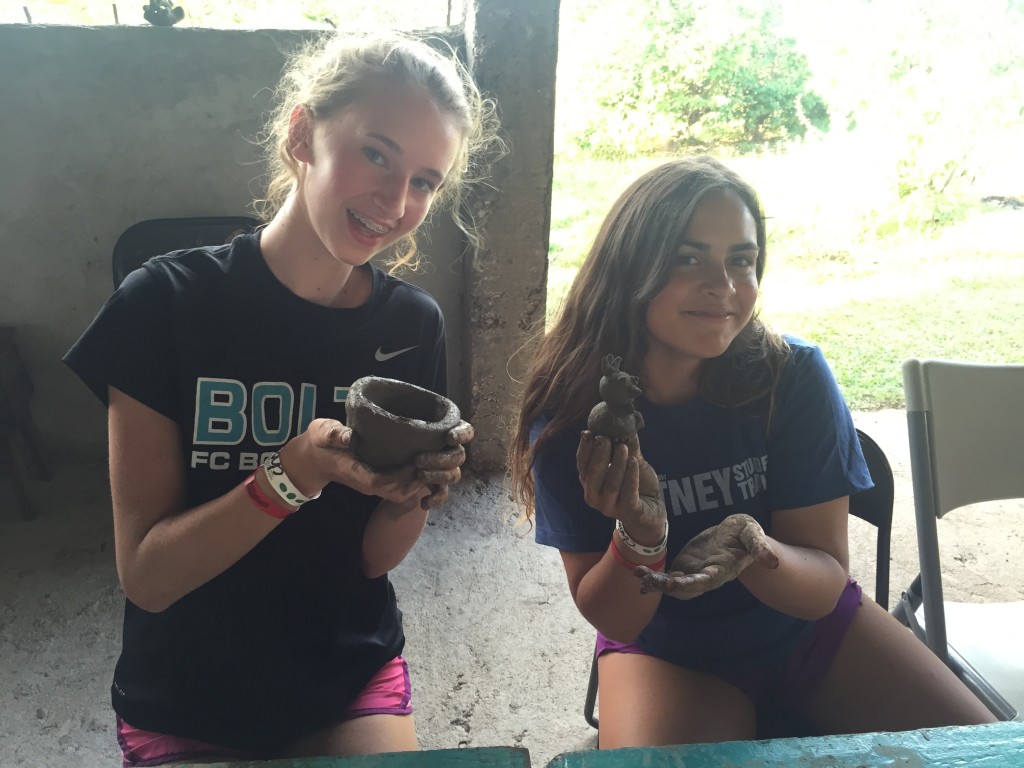We took a daytrip from Playa Hermosa down to a village named San Vicente, which is located a bit more in the upper valley – so less beach and more mountain. There are numerous villages that outline San Vicente, most of which are still enmeshed in ancient indigenous traditions and practices. One of these traditions, pottery making and clay work, was the reason for our visit to the Ecomuseo de la Cerámica Chorotega.
After a beautiful bus ride through a mountainous valley, we arrived at the Ecomuseo where we were met by Dona Maribel, who gave us a wonderful and insightful presentation about the importance of clay-based artisan work and the traditions of their ancestors. Through various exhibitions, she explored the details that composed every-day indigenous life in San Vicente. For instance, she showed us how to this day, many women in the San Vicente valley still wash their clothes by hand at the local river and use all natural seeds and plant extracts as soap. The water from this river was a point of emphasis for Dona Maribel as she explained to us that it had volcanic properties that actually made the laundry that much more clean. One of the things that really struck the students was the fact that the EcoMuseo actually housed 36 replicas of original pieces (housed in the National Museum in San Jose) from 2500 years BC.
After Dona Maribel’s wonderful presentation, she introduced us to her husband, Don Alonso, who took charge of demonstrating to the students how to make some very basic clay pieces on the wheel. Every student got a piece of clay and after Don Alonso explained the basic techniques, tools, and movements of the hands, they began to create their masterpieces. Some of the kids made animals, others palm trees, but all of them got an opportunity to get creative and build something with their own hands.
A handful of them got to have a hand (pun intended) at the wheel, and Don Alonso was really good about guiding them through every single detail. It was a very special moment, not only because Don Alonso was able to share this tradition with us, but also because he facilitated our own entrance – via the construction of a physical object – into the world of his ancestors and the cultural heritage that the indigenous forefathers of his land left behind.
When asked by one of the students as to how his ancestors were able to create such masterpieces without the tools available to him today, Don Alonso simply replied: “we ask ourselves that everyday, but no matter how, the important thing to know is that they passed this practice onto us.”
After tapping into our artistic repertoires, Don Alonso and Dona Maribel treated us to some tea, coffee, and some mouth-watering “empanadas” that the kids really enjoyed. This was a perfect pre-dinner snack, and to finish up our visit, the students did a bit of souvenir shopping.
In all, our experience in San Vicente was truly eye-opening, and we got to see a cultural patrimony of Costa Rica that we know the kids will remember for years to come.
